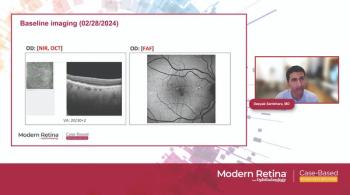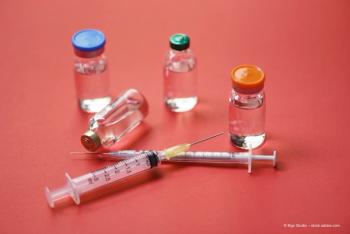
Laser treatment, observation for DME could save U.S. healthcare system billions
Understanding the per-person cost differences with 3 key management strategies for a better-informed treatment selection
In patients with diabetic macular edema (DME) but good visual acuity (VA), initial laser treatment or observation offers stunning cost savings to both the patient and the healthcare system compared with immediate anti-VEGF treatment with aflibercept. Jennifer K. Sun, MD, MPH, Harvard Medical School, presented a cost analysis of DME treatments over 10 years using DRCR Retina Network Protocol V strategies of initial aflibercept, laser treatment, or observation during the 2020 American Society of Retina Specialists virtual annual meeting.
Protocol V, which enrolled 702 eyes, found no difference in vision loss at 2 years between the three management strategies in patients with center-involved DME and VA of 20/25 or better.1 Aflibercept was given in the laser and observation groups if VA declined from baseline (25% and 34% of patients, respectively). Over the 2-year study period, the average number of visits per patient was 18.8, 13.5, and 12.4 in the aflibercept, observation, and laser groups, respectively.
“All three management strategies resulted in a mean VA at 2 years of 20/20,” Sun said. “Based on these results, many clinicians and patients might choose initial observation for eyes with center-involved DME and good vision, withholding anti-VEGF treatment unless vision worsens.”
Given the similar outcomes, Sun et al sought to understand the per-person cost differences between the three management strategies to better inform treatment selection.
Researchers identify billions in savings
Researchers estimated the 10-year cost using Protocol V data from years 0 to 2, factoring in the price of clinic visits, diagnostic tests, study interventions, and any additional interventions needed to manage complications for each study group. They then extrapolated data from years 3 to 10, assuming three clinic visits, three optical coherence tomography (OCT) sessions, and 0.5 injections a year in all groups for the estimated 1.87 million patients in the United States with center-involved DME and a VA of 20/25 expected by 2029.
Over the 2-year Protocol V study period, Sun et al estimated a per-person cost of about $17,000 for aflibercept, $6,917 for observation, and $5,885 for laser treatment.
“When we examined the U.S. population-estimated costs over a 10-year window from 2020 to 2029, we see that on a yearly basis, the aflibercept group costs are anywhere between $2 billion to nearly $5 billion per year, whereas the cost for the laser and observation groups, assuming aflibercept being added over time with vision worsening, range from approximately $1 billion to $2 billion per year,” Sun explained.
The cumulative total over 10 years: $28.8 billion for aflibercept, $15.7 billion for observation, and $14.4 billion for laser treatment.
“The number of aflibercept injections in years 3 through 10 could make a substantial difference in societal costs,” Sun said.
Although decreasing the price of aflibercept itself would obviously help, even still, “the price per aflibercept drug would have to be less than $0 for initial management of center-involved DME with aflibercept to be less costly than initial management with laser or observation,” she said.
Sun noted several study limitations. For example, the study does not determine potential improvements in vision that may warrant the additional cost of aflibercept. The study is also based on modeling and several long-term assumptions about the prevalence and incidence of DME through 2029.
“Although it is important that patients and clinicians have the option for each of these approaches based on individual considerations, on a societal level, cost savings might be achieved with initial laser or observation,” Sun concluded.
Jennifer K. Sun, MD, MPH
jennifer.sun@joslin.harvard.edu
Sun did not indicate any proprietary interests relevant to this presentation.
Reference
1. Baker CW, Glassman AR, Beaulieu WT, et al. Effect of Initial Management With Aflibercept vs Laser Photocoagulation vs Observation on Vision Loss Among Patients With Diabetic Macular Edema Involving the Center of the Macula and Good Visual Acuity: A Randomized Clinical Trial. JAMA 2019;321(19):1880-94.
Newsletter
Keep your retina practice on the forefront—subscribe for expert analysis and emerging trends in retinal disease management.








































